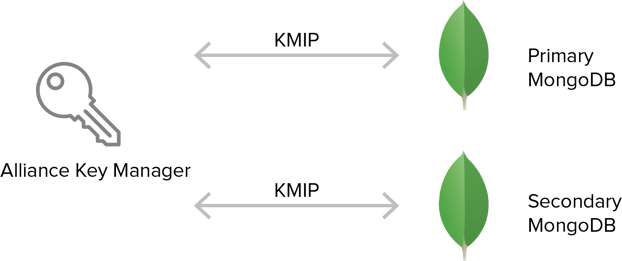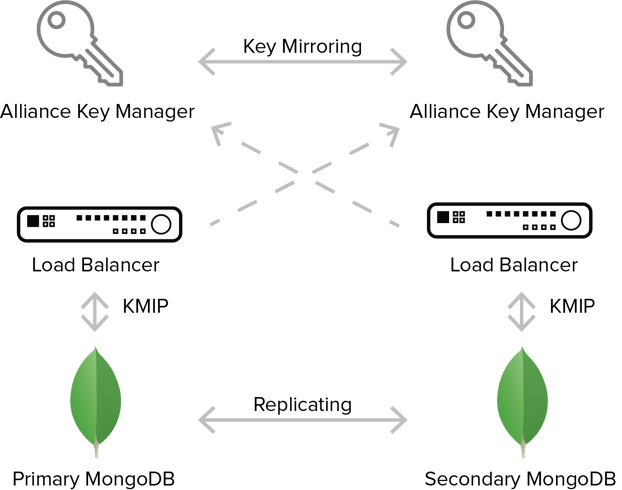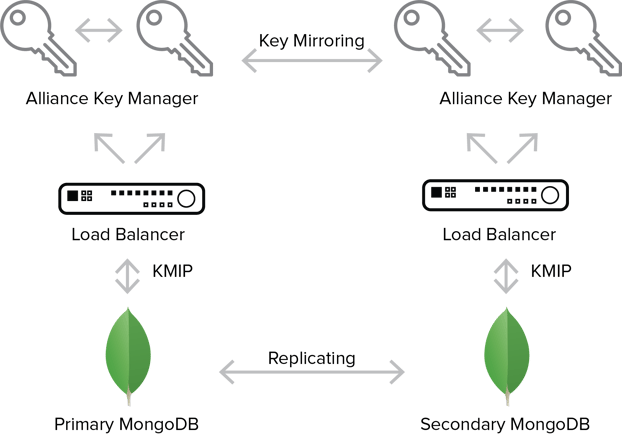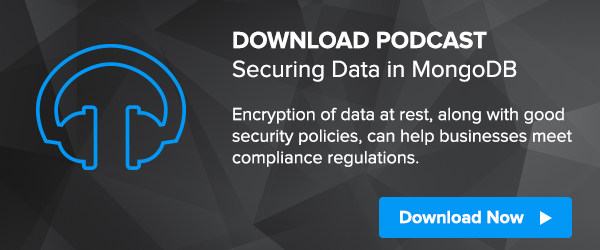The MongoDB database is designed to be resilient and gives you several options for high availability and business continuity. But what about encryption key management - how do we implement high availability when we’ve deployed a key management system for MongoDB encrypted databases? Here at Townsend Security we encounter this question with MongoDB users on a regular basis. Let me share some of the approaches that we recommend.
We can take a GOOD, BETTER, and BEST view of key management high availability. Not every MongoDB database implementation needs extreme high availability, and there are costs and benefits for different approaches. So let’s run down some of the common options:
GOOD
Not everyone uses the MongoDB database for mission critical applications, and hot failover is not needed. But, of course, in the event of a disaster that takes down your data center, network, or servers, you want to be able to recover in a reasonable amount of time. In this case, you can rely on the backup and restore capabilities of Alliance Key Manager for MongoDB. Here is a diagrammatic example of a simple case of a primary and secondary MongoDB implementation that share a single key manager:

In this case we deploy a single key manager to serve both the primary and secondary nodes of a MongoDB implementation. After initializing the MongoDB database for encryption, we perform a key manager backup to archive the master encryption key for the primary and secondary nodes of the database.
Recovery of the MongoDB database may involve migration from the secondary node to the primary node when it is back online, or restoration from a backup image, and a restore operation for the key manager. Alliance Key Manager makes it easy to backup the encryption key database and configuration, and to restore from backup when needed. This is the simplest case of key management recovery when hot failover is not needed.
Remember to follow security best practices when backing up Alliance Key Manager. You will want to save the secret keys separately from the data encryption keys, and ensure separation of duties. See the Alliance Key Manager documentation for guidance on backup and restore operations.
BETTER
For many MongoDB customers the applications built on the MongoDB database represent core, mission critical applications that must be available at all times. These customers need a high availability strategy that guarantees very little loss of availability and rapid recovery. While there are different failover strategies for MongoDB customers, the normal approach would be to failover to a secondary MongoDB node at a geographically independent data center. The primary and secondary nodes would use separate key management systems which would be synchronized. A diagrammatic might look something like this:

The primary MongoDB node has a key manager deployed in its data center or cloud location, and the secondary MongoDB node has a different key manager deployed in its data center or cloud location. The two key managers are mirroring encryption keys in real time in an active-active configuration. Both the MongoDB data and the Alliance Key Manager instances are fully redundant in real time.
BEST
Enterprise customers who build mission critical applications on MongoDB databases and who must have full business continuity and high availability failover can achieve this with MongoDB replication and redundant Alliance Key Manager servers. A primary MongoDB node can associate two redundant key servers, and a secondary replicating MongoDB node can associate two different redundant key servers. Since MongoDB configuration only allows for the definition of a single key server, we can use a load balancer to implement the redundant key management pair. A diagram of this configuration would look like this:

With a load balancer placed between the MongoDB database and the two key managers you can achieve hot failover in the event of a lost connection to the first key server without loss of access to the database. When the connection to the main key server is restarted the load balancer will bring it on line. The two Alliance Key Management servers automatically mirror encryption keys to each other in an active-active configuration.
In the event of a full loss of the primary MongoDB database the failover to the secondary MongoDB database will occur by the MongoDB Arbiter. The fully replicated data will be available and the secondary database will be protected by a pair of Alliance Key Manager servers in the same was as the primary MongoDB database.
Note that there can be multiple secondary MongoDB nodes and each can implement a similar key management failover strategy. With the above strategy MongoDB database customers can achieve a very high level of business continuity and high availability failover.
Additional Considerations
MongoDB database deployments vary a great deal in their overall architecture and implementation. This is a testament to the flexibility of the database and its ability to meet a wide variety of customer use case scenarios. Alliance Key Manager for MongoDB can help improve security and recoverability in any MongoDB deployment.
Alliance Key Manager is available has a Hardware Security Module (HSM), VMware software appliance (virtual machine), and as cloud instances. The interface to all of the key managers works in exactly the same way. This means you can create hybrid deployments of MongoDB and Alliance Key Manager across clouds, and between cloud and on-premise deployments.
At the time this blog was written (March 2018) the MongoDB Atlas cloud platform did not support independent third party key management solutions through the KMIP interface. That is likely to change in the future. For Enterprise customers who must achieve exclusive custody of encryption keys, you can deploy MongoDB in a normal cloud instance and use the encryption and key management capabilities of MongoDB with Alliance Key Manager. You can then migrate to the Atlas service when it supports the KMIP interface for key management.
About Alliance Key Manager
Alliance Key Manager for MongoDB is certified by the MongoDB security team, and supports the MongoDB Enterprise pricing model. Regardless of the size of your MongoDB implementation you will find an affordable and easy-to-deploy Alliance Key Manager for MongoDB solution.
Image Credit:
Load balancer created by AlexWaZa from the Noun Project
Key created by icon 54 from the Noun Project

